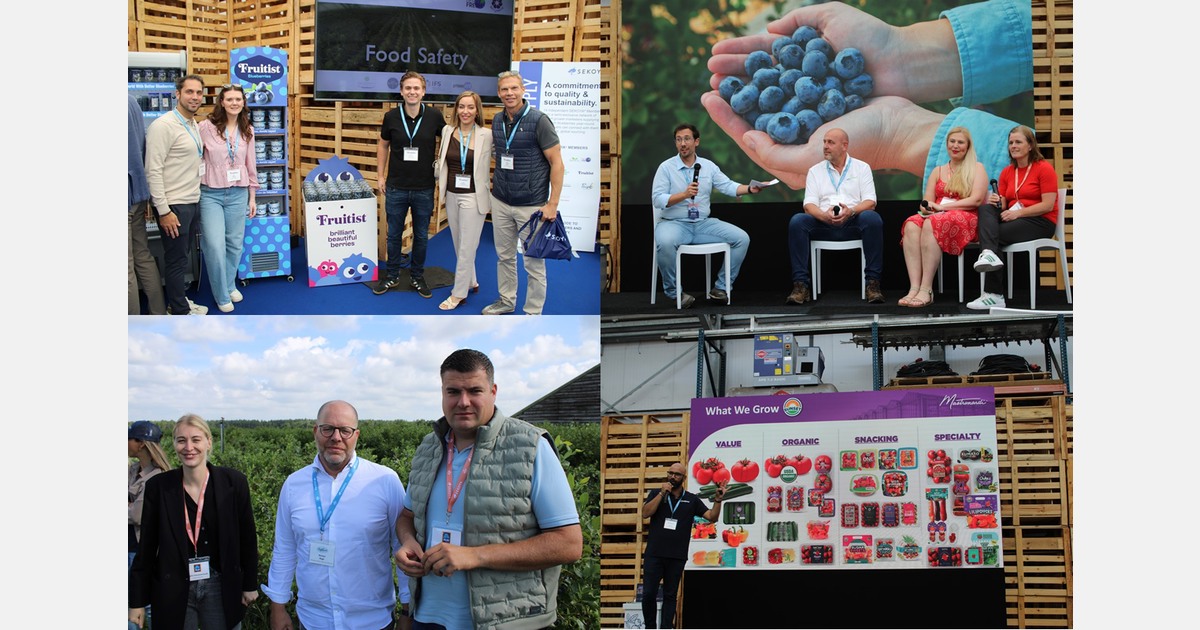 Sekoya’s global licensees and supermarket category managers gathered at Fall Creek in Meterik on Tuesday, 15 July, for the Sekoya Field & Forum. After a bus trip to a nearby field where the Sekoya Grande and Crunch varieties were grown both in pots and in the ground, the official programme got underway.
Sekoya’s global licensees and supermarket category managers gathered at Fall Creek in Meterik on Tuesday, 15 July, for the Sekoya Field & Forum. After a bus trip to a nearby field where the Sekoya Grande and Crunch varieties were grown both in pots and in the ground, the official programme got underway.
Cultivation within the Sekoya berry programme is progressing steadily. Through its fourteen member companies (North Bay Produce, Alpine Fresh, SanLucar, Surexport/RK Growers, abbGrowers, Joy Wing Mau, Fresh Produce Group, Core, Zur Group, Prize, Fruitist, Agroberries/Berryfresh, Berries Paradise, Rainier Fruit, and Mastronardi), these varieties are now being grown in 30 countries, accounting for a total production volume of 125 million kilos, general manager Mark David reported.
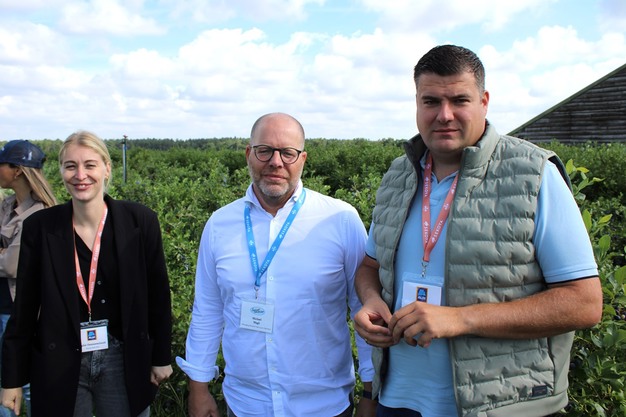 © Izak Heijboer | HortiDaily.com
© Izak Heijboer | HortiDaily.com
Sophie Hammerschmidt and Martin Schneider of Aldi with Michael Magli of SanLucar Germany in the middle.
This year, there was a special focus on locally grown mid/high chill blueberries. Mariusz Padewski of Fall Creek introduced a new global research project, which includes the Delphy Improvement Centre in Bleiswijk. “We bring winter and sunshine into the greenhouse, all with the aim of optimising fruit cultivation and quality through a data-driven approach.”
Freshness high on consumer wish list
Alongside cultivation, consumer behaviour surrounding blueberry consumption was also a key topic. Ben Lewis of Sekoya shared insights from a consumer survey conducted in Germany, Poland, the UK, and Sweden. A shared outcome across all countries was the high importance placed on freshness. The health benefits of blueberries were especially appreciated by consumers in Spain, Poland, and the UK.
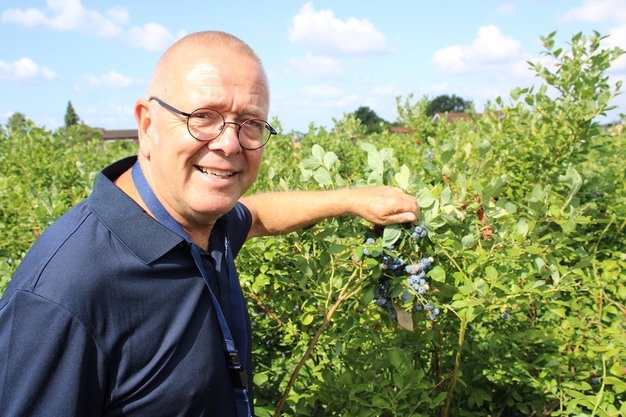 © Izak Heijboer | HortiDaily.com
© Izak Heijboer | HortiDaily.com
Bas Tramper of Fall Creek, who personally welcomed many growers to Meterik on Wednesday, 16 July
Desserts, snacks, and smoothies are the most common uses for blueberries across the surveyed countries. Polish consumers are especially likely to enjoy them in desserts or as a snack, while British consumers most often include them at breakfast. Regardless of the country, the main concerns remain the price and availability of blueberries. Notably, Sweden showed the least interest in organic berries. Lewis noted that a similar survey is planned for the promising Asian market.
Mastronardi: 2,800 hectares of greenhouse vegetables in the U.S., Canada, and Mexico
For a broader industry perspective, Amar Raja of Mastronardi Produce shared insights into the growth of the greenhouse vegetable specialist, which now cultivates over 2,800 hectares across the US, Canada, and Mexico. Branding is central to the family-owned company, now managed by the fourth generation. Colourful brands, he said, enhance ‘stopability’ in stores and improve ‘shopability’.
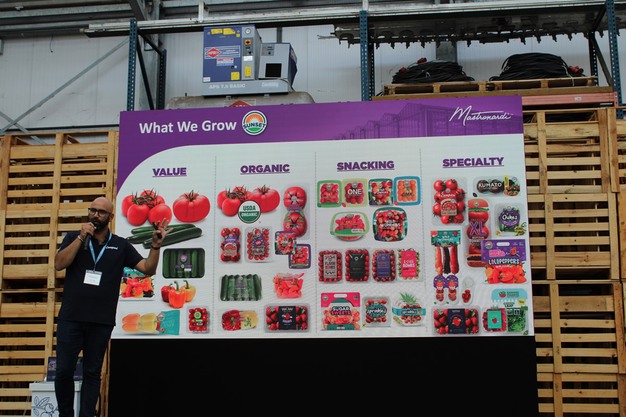 © Izak Heijboer | HortiDaily.com
© Izak Heijboer | HortiDaily.com
Amar Raja of Mastronardi Produce
With the right varieties and strong branding, Raja stated, the company has introduced a new standard of quality in the North American market. For example, sales of snack and roma tomatoes rose by 11% and 4%, respectively, while sales of vine and beef tomatoes declined by 9% and 8%. Mastronardi’s mini cucumbers are also seeing growth. The market is clearly trending towards greenhouse-grown products. A vital part of Mastronardi’s success, Raja explained, is the strategy of setting annual targets that apply to everyone, from the CEO to warehouse staff.
Panel
Can this model also work in the European market? Fred Douven of abbGrowers is doubtful. “America has 50 states with overlapping retailers. Europe alone consists of 44 countries.” He joined Sabina Wyant of Marks & Spencer and Cindy van Rijswick of Rabobank in the closing panel discussion. June was seen by the panellists as the most critical month, though extreme weather events in global cultivation continue to pose major challenges.
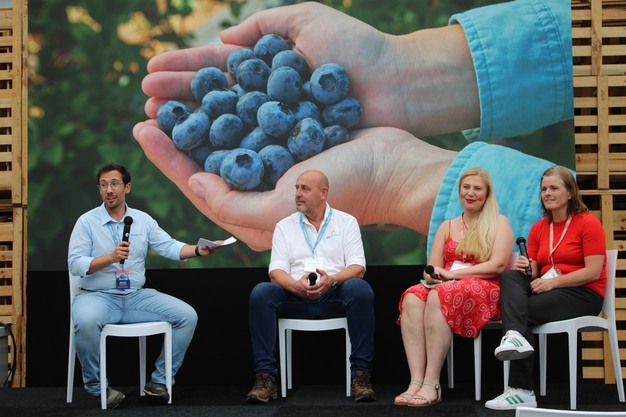 © Izak Heijboer | HortiDaily.com
© Izak Heijboer | HortiDaily.com
Closing panel discussion led by Alexis Simões with Fred Douven (abbGrowers), Sabina Wyant (M&S), and Cindy van Rijswick (Rabobank)
Year-round consistency in supply and quality is essential. Cindy cited a case where a promotion offered two packs of blueberries sourced from different countries and varieties, resulting in a significant quality discrepancy. The Sekoya Mid-High Chill initiative was therefore applauded. “The big question is how to replace Duke,” Wyant noted.
“There are still challenges regarding labour, but high-chill varieties offer opportunities,” Cindy concluded. In his closing remarks, Mark David of Sekoya observed that the blueberry industry’s agenda has shifted dramatically over the past decade. “Be prepared for the unexpected,” he advised attendees.
Click here to view the photo report
